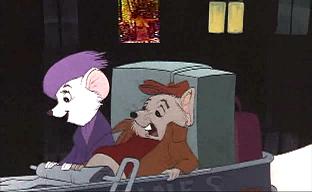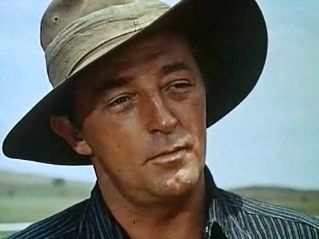
The world’s most dangerous golf hole is at Camp Bonifas in South Korea. It’s just south of the demilitarized zone, it’s a par 3, and it’s surrounded on three sides by live minefields.
I’ll wait over here.

The world’s most dangerous golf hole is at Camp Bonifas in South Korea. It’s just south of the demilitarized zone, it’s a par 3, and it’s surrounded on three sides by live minefields.
I’ll wait over here.

Harry Whittier Frees did a booming business in novelty postcards in the early 20th century, posing animals in human situations, including props and sets.
“I take occasion to give my personal assurance that all pictures appearing in this book are photographed from life,” he wrote in 1915’s The Little Folks of Animal Land. “The difficulties encountered in posing kittens and puppies for pictures of this kind have been overcome only by the exercise of great patience and invariable kindness.”

Yes, it’s The Rescuers, and yes, that’s a topless woman in the window.
Disney discovered her in two frames of the film’s 1999 home video release, but apparently she’d been there since the film’s premiere in 1977.
The studio recalled 3.4 million videotapes and released a cleaned-up version two months later. If they know who did it, they’re not saying.
Take any twenty-one cards, and ask a person to choose one from them. [Deal] them in three heaps, and ask the person who selected the card in which heap it is placed. Gather them up, and put the heap containing the chosen card between the other two. Do this twice more, and the chosen card will be found the eleventh from the top.
— Alfred Elliott, The Playground and the Parlour, 1868
A good American misprint was the following, which is warranted as true and genuine. It occurred in the proof-sheets of a scientific treatise. The sentence, as written by the author, ran as follows: ‘Filtration is sometimes assisted by the use of albumen.’ This came out as: ‘Flirtation is sometimes arrested by the use of aldermen.’
— Patrick Maxwell, Pribbles and Prabbles, 1906
The following is a good catch: lay a wager with a person that to three observations you will put to him, he will not reply ‘a bottle of wine.’ Then begin with some common-place remark, such as, ‘We have had a fine, or wet, day to-day,’ as it may be; he will answer, of course, ‘a bottle of wine.’ You then make another remark of the same kind, as, ‘I hope we shall have as fine or finer to-morrow,’ to which he will reply, as before, ‘a bottle of wine.’ You must then catch him very sharply, and say, ‘Ah! there, sir! you’ve lost your wager;’ and the probability is, if he be not aware of the trick, he will say ‘Why, how can you make that out?’ or something similar, forgetting that, though a strange one, it is the third observation you have made.
— Samuel Williams, The Boy’s Treasury of Sports, Pastimes, and Recreations, 1847

“Look. I have two kinds of acting. One on a horse and one off a horse. That’s it.” — Robert Mitchum
You’d pay $1,000 to witness my mastery of the black arts, wouldn’t you? Of course you would.
You owe me $1,000.
A tied football match in southern Congo came to an unexpected conclusion on Oct. 28, 1998, when a lightning bolt struck and killed all 11 members of the visiting team.
“The athletes from [home team] Basanga curiously came out of this catastrophe unscathed,” reported the Kinshasa newspaper L’Avenir.
“The exact nature of the lightning has divided the population in this region, which is known for its use of fetishes in football.”
The Earl of Yarborough offers you a wager. He’ll shuffle an ordinary deck and deal you 13 cards. If none of your cards ranks above 9, he’ll give you a thousand pounds. Otherwise you must give him one pound.
Should you accept?